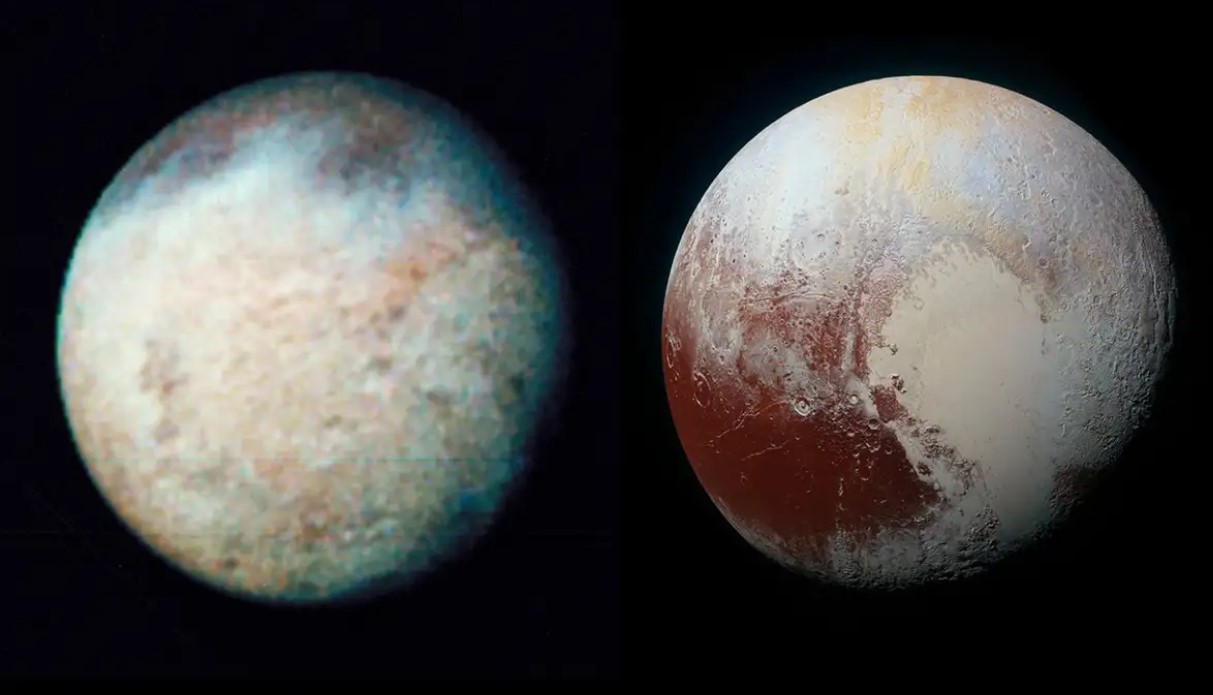At least that's what researchers concluded based on an analysis of the chemical composition of Pluto and Triton. All of this leads to another exciting conclusion: it's possible that there is more than one Pluto.
Pluto has suffered a lot in the past, losing its status as a planet, but now it seems that it has at least gained a brother. Based on analysis of their chemical composition, Triton, the largest of Pluto's and Neptune's moons, may come from the same region of the early solar system. New Scientist reports. Both icy bodies have already been visited by NASA spacecraft: Triton was visited by Voyager 2 in 1989, while New Horizons more recently visited Pluto in 2015. Based on the analyses, there are other similarities between the two bodies besides ice: e.g. Their densities are similar, and it can be assumed that there are subsurface oceans in the case of both.
Another observation is also related to this: Triton's retrograde orbit, which differs from all other large moons, because it indicates that this celestial body formed not next to Neptune, but in the Kuiper Belt, the region of distant icy bodies where Pluto is also found. is found.
According to research by Kathleen Mandt at NASA's Goddard Space Flight Center, Triton and Pluto may have formed close to each other before the solar system stabilized. Both celestial objects contain high levels of nitrogen and traces of methane and carbon monoxide, indicating that they formed in the cool, nitrogen-rich outer regions of the young solar system. These regions were probably located beyond the water ice line, about 30 astronomical units (abbreviated CsE, roughly equivalent to the average distance between the Sun and Earth) from the Sun, where the water remains frozen.
According to the study, the two celestial bodies could have formed relatively close to each other, at a distance of about 1-5 cm. Triton was later pushed out and captured by Neptune's gravity, possibly due to the early motions of the giant planets, which disturbed the orbits of young objects in the solar system. All of this thus explains Triton's current unusual orbit around Neptune.
According to Paul Schenk of the Lunar and Planetary Institute, understanding the origins of Triton and Pluto could provide important information about the formation of the solar system. As he said:
“All of this may indicate the existence of more than one Pluto. Other bodies of similar size and composition are likely to have been lost.”
Naturally, all of this can be confirmed by visiting these two celestial bodies again, but unfortunately this is not very likely, at least in the near future. NASA's planned Triton mission, Trident, has not been selected for further development in 2021, despite the fact that this would have provided an opportunity for further research on this particular issue. Carly Hewitt of Oxford University believes, contrary to NASA's opinion, that such a mission would be necessary. She said:
“Triton has the largest solid body area we have ever discovered in the solar system. If they did not form in the same region (with Pluto), why are they so similar?”
(Image: Triton (left) and Pluto are unmeasurable. Source: JPL/NASA//Johns Hopkins University Applied Physics Laboratory/Southwestern Research Institute)












































